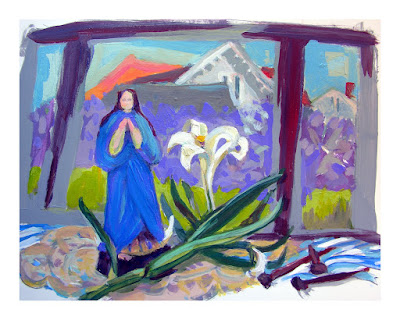So during some COVID-19 free time, I amused myself by creating images with meat trays as a printing substrate.
The following six small paintings were painted en plein air in the NH White Mountains, the pre-pandemic winter and I wanted to re work these images into small prints.
Exact-o blades and blunt end pencils were used to cut out the shapes. The Styrofoam surface has lots of air holes. When this surface is rolled lightly with printing inks and printed on paper, an atmospheric illusion of fog or mist is created. Incising the foam surface with lines drawn with a pencil will give linear details and textures.
To keep the printing paper in place while switching out inked shapes for over printing, I used a clip board with a right angle taped to the board to help maintain proper positioning of the shapes. I used a limited palette of pre-mixed Caligo inks (water soluble), very similar in color as the original painting.
I had a very enjoyable afternoon working in the studio experimenting with a limited number of shapes and colors to find multiple solutions. I plan to use my other small NH paintings as a start point for other prints using Styrofoam meat trays as the substrate. And maybe sometime in the future they could be further enhanced by working the printed surface with other media such oil pastels or collage.









